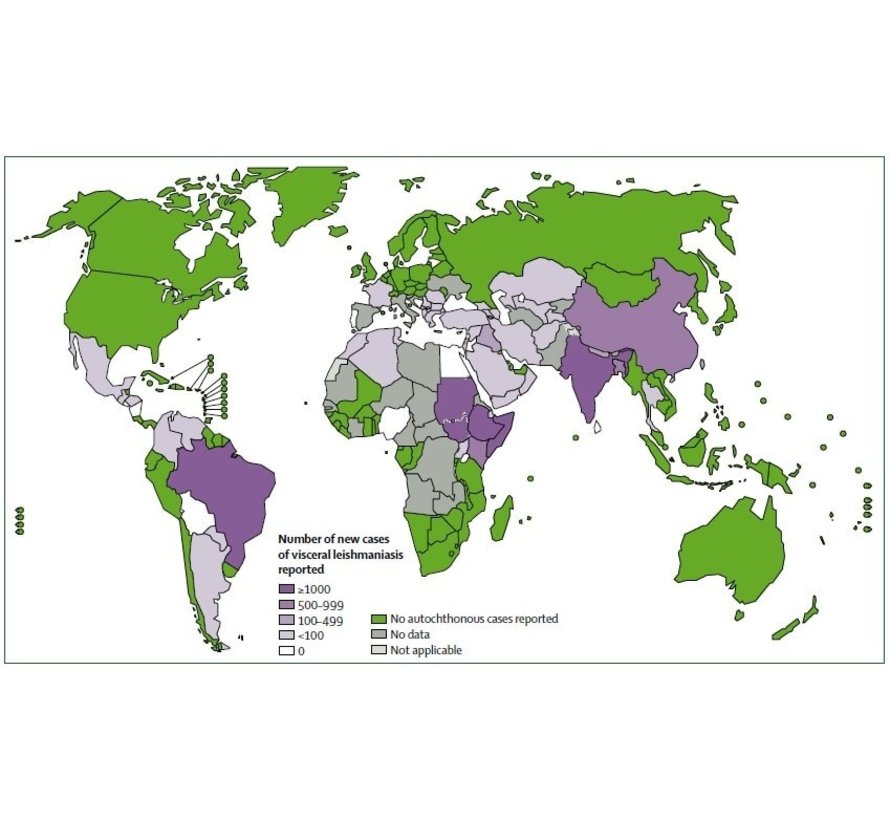antibodies to Leish. donovani/infantum (EIA)
Leishmania Donovani/infantum EIA, Method EIA code: LEIDIG serum
If the result is negative, the result is good.
If the result is positive, the titer can be determined afterwards:
Leishmania Donivani/infanum PHA, method IHA code: LEIDIP serum
Leishmaniasis
Leishmaniasis is a parasitic infection of the skin (cutaneous leishmaniasis), skin and mucous membranes (mucocutaneous leishmaniasis) or internal organs (visceral leishmaniasis) caused by Leishmania parasites. These are single-celled organisms. They are transmitted by small, hairy mosquitoes (sand flies). This sandfly does not live in the Netherlands, therefore leishmaniasis is an import disease here. Transmission through direct contact is possible, but rare.
Six Leishmania species occur in humans and are morphologically indistinguishable from one another. It is estimated that 12 million people worldwide suffer from some form of leishmaniasis and that there are 1.5-2 million new cases per year. The incidence is increasing due to factors such as HIV and malnutrition, but also due to the increase in Tropical travel. Due to military missions to Iraq and Afghanistan, attention in Western countries to this disease has increased.
Cutaneous leishmaniasis is not fatal, usually heals on its own in 1 month to 1 year, but can cause significant damage, longstanding ulcers and extensive scarring. Mucocutaneous and visceral leishmaniasis can be fatal.
Leishmaniasis is generally zoonotic: humans are not the natural host (with the exception of Leishmania tropica and L. donovani), the infection is transmitted from animals (mainly dogs, lagomorphs and rodents, but also ungulates, sloths and monkeys) to humans, the vector being the sandfly. Clinical signs occur within a few weeks to months.
For more information see: Leishmaniasis | LCI guidelines (rivm.nl).
The most relevant points
- Leishmaniasis is caused by Leishmania parasites, transmitted by sandfly.
- Leishmaniasis is an import disease in the Netherlands that is seen more and more frequently, among
- Dutch military who have been deployed to Iraq and Afghanistan.
- Consider cutaneous leishmaniasis in the case of a non-healing ulcer in a high-risk patient (deployed military, refugees, but also tourists).
- Cutaneous leishmaniasis is self-limiting, but treatment is usually desirable to limit scarring. In mucocutaneous forms, treatment is always necessary.
- If cutaneous leishmaniasis is suspected, it is best to refer the patient to a dermatologist for a correct biopsy and choice of treatment.
- Visceral leishmaniasis (kala-azar) is life-threatening and should always be referred and treated by an internist-infectiologist.
Follow-up diagnostics:
- Diagnosis by direct detection of the parasites or PCR on material from the skin lesion.





